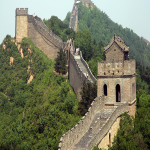Don’t forget to register and attend Thursday’s section meeting. To register or for more information on the program visit The program description
Update – More tickets are now available register now!!
Don’t forget to register and attend Thursday’s section meeting. To register or for more information on the program visit The program description
Update – More tickets are now available register now!!
Duties & Responsibilities:
Description
For over 30 years VSC, an independent subsidiary of Verify, Inc., has been a trusted resource to over 200 companies in aerospace, defense, and high-technology industries. This partnership has created worldwide opportunities for contract Project Specialists to work with our customers and their suppliers. Together, we ensure quality in supply chain and supplier management programs.
Continue reading Quality Source Inspection position (part-time)
The Presentation will include:
Continue reading General Section Meeting – Lessons Learned/Survivor Stories – June 13th, 2013

Please visit the Scholarship Program & Application page for complete eligibility details and this year’s application form.
The deadline for application is April 1st, 2013 for any questions contact: Susan Watson at 718-558-3881, or email us at Scholarship@metro-asq.org
I. Presentation overview—Lynn Tang, PhD, Associate Professor, College of New Jersey
China’s 12th Five Year Plan (2011-2015) offers an important framework for China’s economic and social development. It is also a significant document for China’s partners in the world economy because it presents both opportunities to do business with China and challenges to compete with Chinese companies in the global marketplace. Policy makers should also heed to China’s call for accomplishing the Plan’s goals.
 The presentation briefly describes the nature of the Plan and explains the implications of the Plan to US businesses. Emphasis is placed on opportunities in China for companies in the health, technology and environmental sectors over the next 5-10 years.
The presentation briefly describes the nature of the Plan and explains the implications of the Plan to US businesses. Emphasis is placed on opportunities in China for companies in the health, technology and environmental sectors over the next 5-10 years.
The presenter will encourage wide audience participation. Several simple questions will be posed to the audience at the beginning of the presentation to engage them in discussion. Participants will benefit from the presentation by learning about the planned direction of the Chinese economy over the next few years, the implications of China’s policies for domestic and international business, and the role that U.S. businesses can play in this new economic environment.
II. Presentation Overview—Irene Wei, PhD, CQA, CEO, CSR Pharma Services, Inc
 Since 2001, when China entered the World Trade Organization, to today when China has hosted the Summer Olympics in 2008 and the World Expo in 2010, the country has evolved into the global low-cost Manufacturing powerhouse with a sizeable sovereign wealth of about USD $3 trillion. Beginning a new decade, we see a changing Healthcare and Life Sciences landscape in the 21st Century with China developing and becoming a new Global Epicenter for Life Sciences Research and Innovation. The U.S. may still be the world’s superpower, but China and India are rapidly vying for world dominance in Biopharma by adding more research and innovation to their life sciences industry. There is a growing competition among these three nations for biopharma enterprises and their jobs, as they all look to this industry (pharmaceutical and biotech) for future growth.
Since 2001, when China entered the World Trade Organization, to today when China has hosted the Summer Olympics in 2008 and the World Expo in 2010, the country has evolved into the global low-cost Manufacturing powerhouse with a sizeable sovereign wealth of about USD $3 trillion. Beginning a new decade, we see a changing Healthcare and Life Sciences landscape in the 21st Century with China developing and becoming a new Global Epicenter for Life Sciences Research and Innovation. The U.S. may still be the world’s superpower, but China and India are rapidly vying for world dominance in Biopharma by adding more research and innovation to their life sciences industry. There is a growing competition among these three nations for biopharma enterprises and their jobs, as they all look to this industry (pharmaceutical and biotech) for future growth.
 The presentation will briefly describe the current market landscape in China and summarize the implications of Quality to US health, technology and environment businesses. Emphasis will be placed on new regulations that may have relevance to other industries. The presenter will discuss challenges and opportunities in China for U.S. companies in this decade.
The presentation will briefly describe the current market landscape in China and summarize the implications of Quality to US health, technology and environment businesses. Emphasis will be placed on new regulations that may have relevance to other industries. The presenter will discuss challenges and opportunities in China for U.S. companies in this decade.
Continue reading Economic and Quality Trends in China: Challenges and Opportunities

September 20th, 6 PM
Fox Hollow Country Club
7725 Jericho Turnpike
Woodbury, NY 11797

As the market evolves, so does the necessity for supply chain quality management to adapt alongside it. In addition to these complexities, there are now cultural differences affecting the changing business environment, whether regionally within a country or globally between nations.
What hasn’t changed is that the customer still expects products and services to be delivered on time and to specification. How does the evolving company best position itself to deliver these demands?
Attendees will be introduced to three Evolutionary changes needed in order to maintain pace with assuring customer/ consumer quality amidst the challenges of the modern supply chain:
Evolution 1: Data Delivery and Consistency
How One collects data and makes comparisons between manufacturing sites. Is all data created equal? What’s the difference between real time data collection vs. real time SPC? Can a process be “over-standardized”?
Evolution 2: Quality Touch Points
How does a typical 1950s US supply chain compare to a 2008 international supply chain? How do these changes in supply chain complexity make quality controls all the more critical? How does one incorporate logistics and freight forwarders into the quality equation?
Evolution 3: Cultural Convergence
How do companies face the modern challenges of cultural and business practices, both regionally and globally, including language & time zone differences?